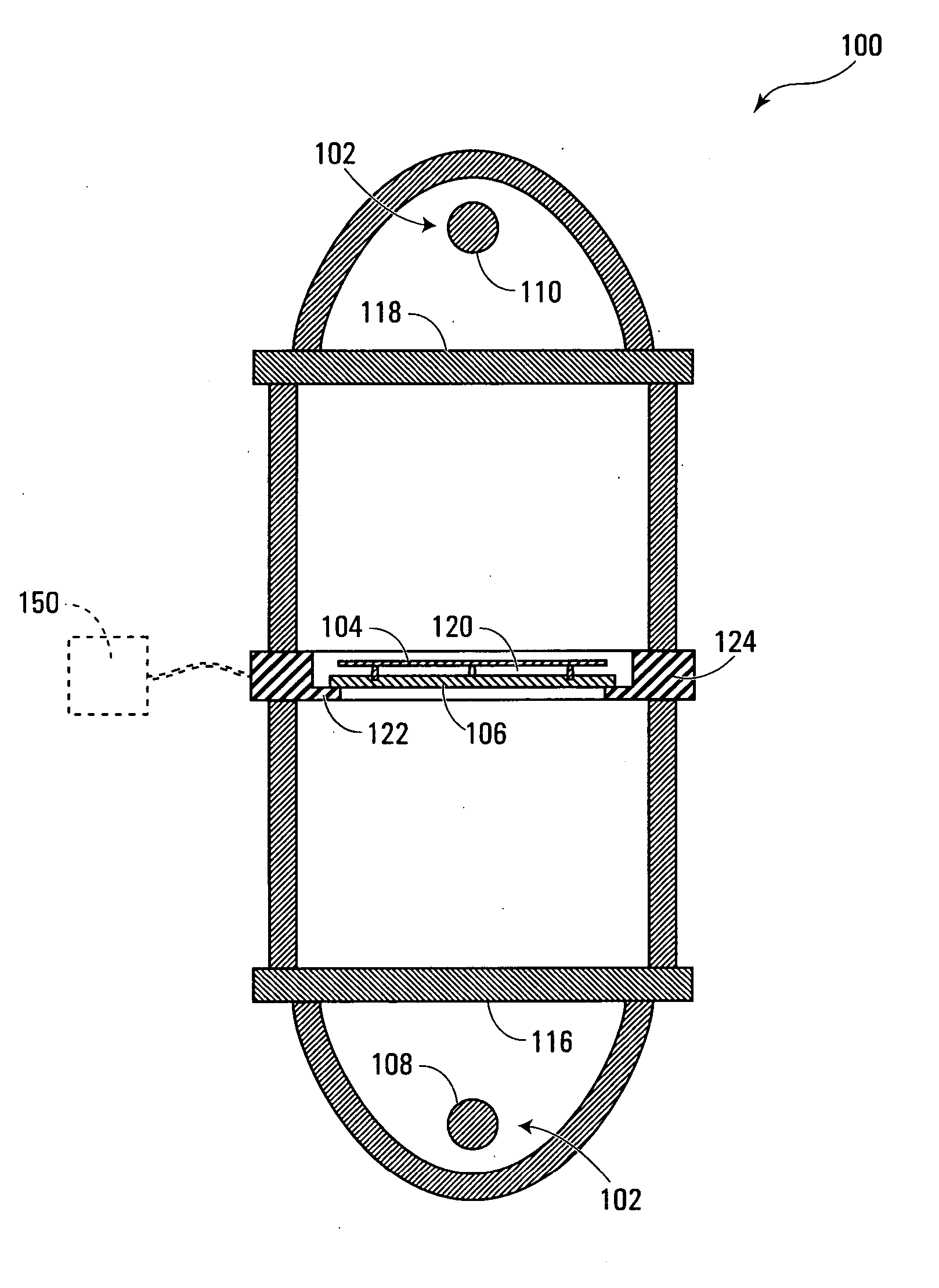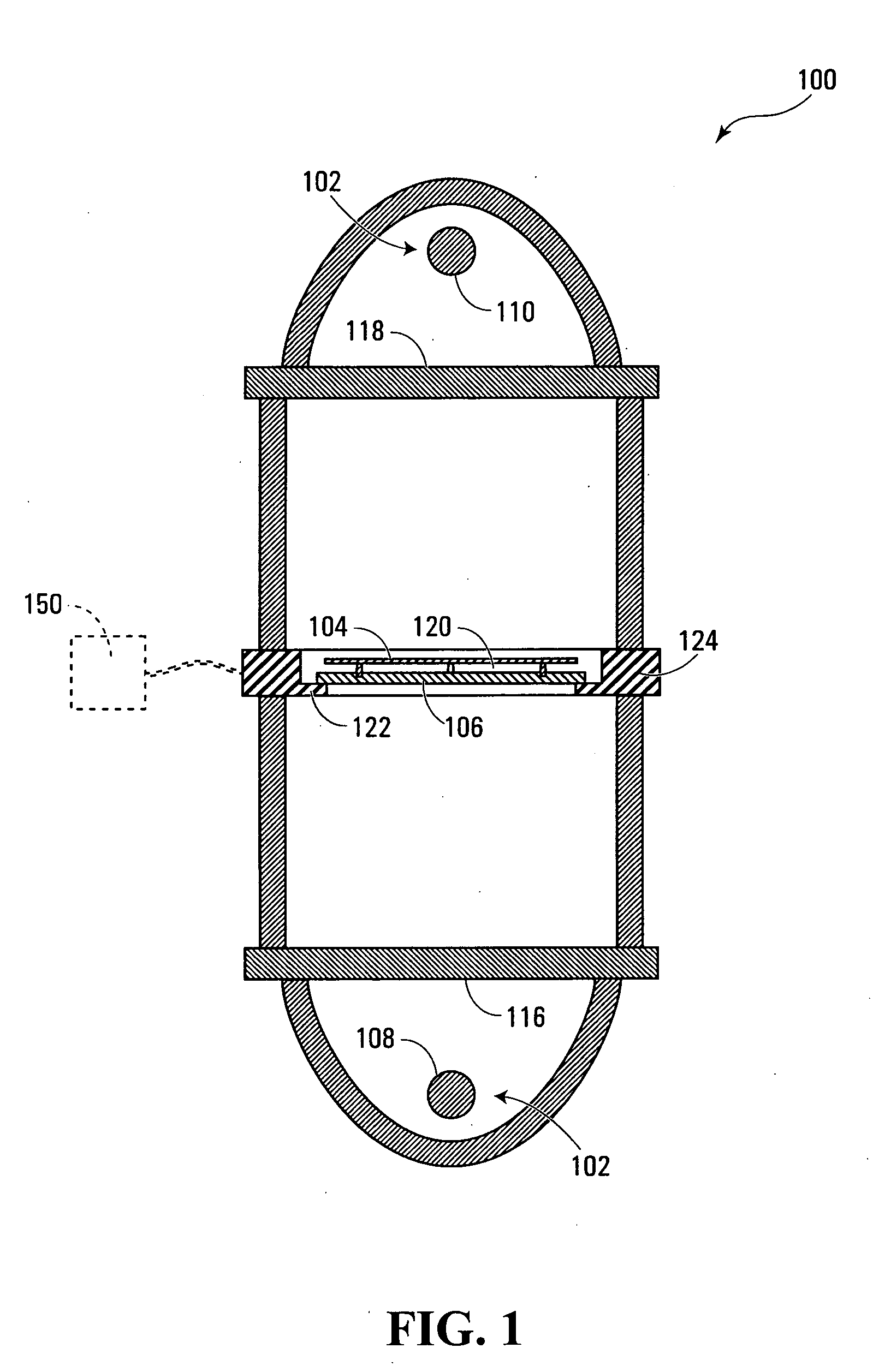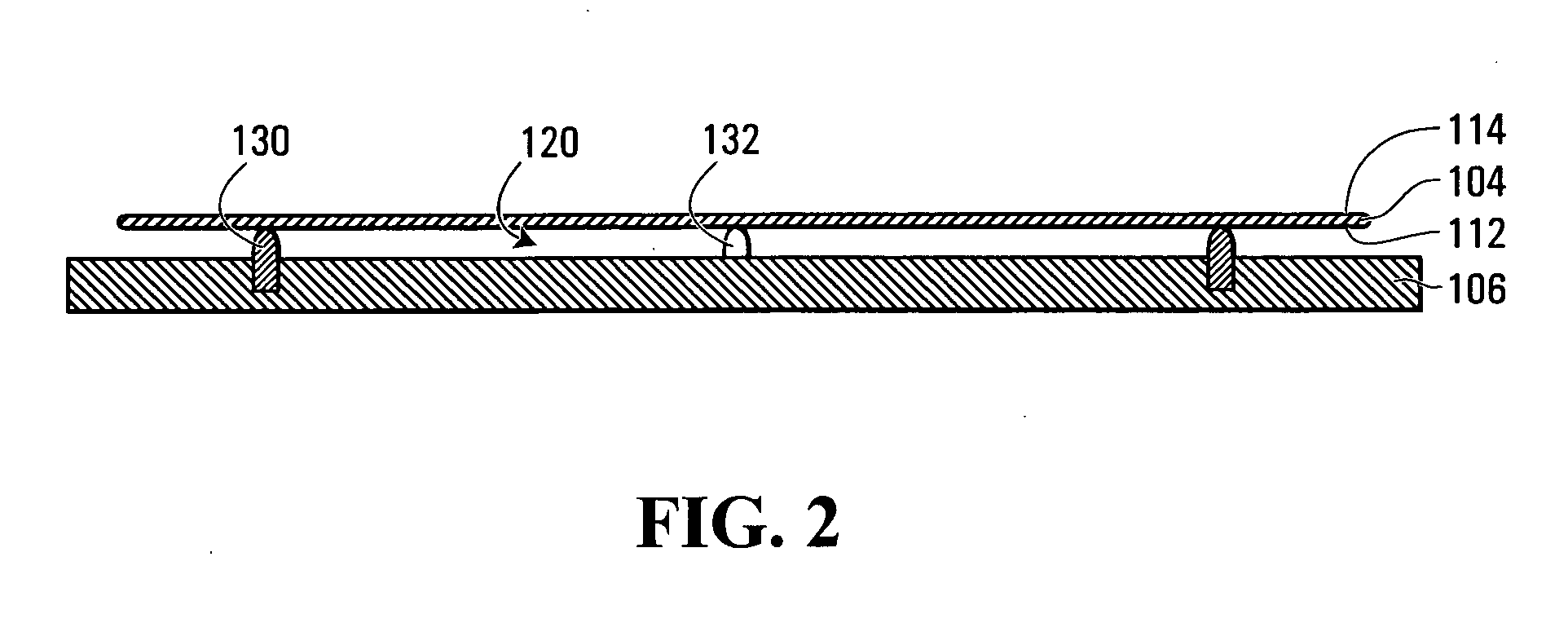Apparatuses and methods for suppressing thermally-induced motion of a workpiece
a technology of workpieces and apparatuses, applied in lighting and heating apparatus, muffle furnaces, furnaces, etc., can solve the problems of large downward force applied to the edges of the wafer, damage to the wafer, and insufficient deformation of the wafer, so as to reduce the likelihood of breakage or damage to the workpiece, the effect of increasing the pressur
- Summary
- Abstract
- Description
- Claims
- Application Information
AI Technical Summary
Benefits of technology
Problems solved by technology
Method used
Image
Examples
first embodiment
[0054] Referring to FIGS. 1 and 2, an apparatus for suppressing thermally induced motion of a workpiece according to the invention is shown generally at 100. In this embodiment, the apparatus 100 includes a workpiece heating system shown generally at 102, configured to thermally induce motion of the workpiece 104, which in this embodiment is achieved by heat-treating the workpiece in a manner that thermally induces such motion. In the present embodiment, the apparatus 100 further includes a damping member 106, spaced apart from the workpiece 104 and configured to apply a damping force to dampen the motion of the workpiece.
[0055] In this embodiment, the heating system 102 includes a pre-heating system configured to pre-heat the workpiece to an intermediate temperature, and a surface heating system configured to heat only a surface region of the workpiece to a desired temperature greater than the intermediate temperature. In this embodiment, each of the pre-heating system and the surf...
second embodiment
[0067] Referring to FIG. 3, the damping member 106 need not be below the workpiece 104, but may be above the workpiece if desired. For example, an apparatus for suppressing thermally induced motion of a workpiece according to the invention is shown generally at 300 in FIG. 3. The apparatus 300 includes a modified workpiece plane plate 302, which acts as a support system configured to support the workpiece below the damping member. The workpiece plane plate 302 supports the workpiece 104 using a plurality of flexible quartz fiber supports such as that shown at 304, as disclosed in the above-noted U.S. application publication No. US 2004 / 0178553 A1. The workpiece plane plate 302 further includes an annular inwardly-protruding supporting edge for supporting the damping member 106 at a desired gap distance above the rest position of the workpiece 104. In this embodiment, as the damping member 106 is thus interposed between the flash lamp 110 and the workpiece 104, it is transparent to t...
third embodiment
[0068] Referring to FIGS. 1 and 4, an apparatus for suppressing thermally induced motion according to the invention is shown generally at 400 in FIG. 4. The apparatus 400 includes a workpiece plane plate 402, having a lower annular inwardly-protruding supporting edge 404, for supporting the damping member 106, in a manner similar to the embodiment shown in FIG. 1. However, in this embodiment the apparatus 400 further includes a second damping member 406, supported by an upper annular inwardly-protruding supporting edge 408 of the workpiece plane plate 402. In this embodiment, the support pins protruding upwardly from the first damping member 106 act as a support system configured to support the workpiece above the first damping member and below the second damping member. In this embodiment, the gap 120 between the back-side 112 of the workpiece and the damping member 106 is similar to that of the previous embodiment, i.e., preferably on the order of one-half millimeter to three mill...
PUM
| Property | Measurement | Unit |
|---|---|---|
| distance | aaaaa | aaaaa |
| distance | aaaaa | aaaaa |
| distance | aaaaa | aaaaa |
Abstract
Description
Claims
Application Information
 Login to View More
Login to View More - Generate Ideas
- Intellectual Property
- Life Sciences
- Materials
- Tech Scout
- Unparalleled Data Quality
- Higher Quality Content
- 60% Fewer Hallucinations
Browse by: Latest US Patents, China's latest patents, Technical Efficacy Thesaurus, Application Domain, Technology Topic, Popular Technical Reports.
© 2025 PatSnap. All rights reserved.Legal|Privacy policy|Modern Slavery Act Transparency Statement|Sitemap|About US| Contact US: help@patsnap.com



